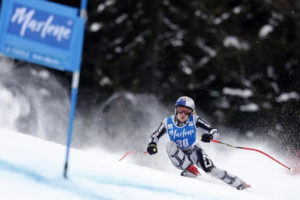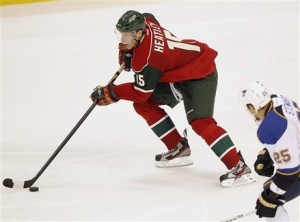If you really want to get into great shape, you have to have a strong core. In order to get and maintain a strong a core, you need to use those muscles, all the time. Forget about Seven Minute Abs, you need to partake in a physical activity that’s all about utilizing your core, and maintaining balance.
Of the four major sports, the pro athletes with the best core strength are ice hockey players. They are constantly burning calories ice skating while utilizing their core muscles to maintain balance.
When it comes to winter sports, some skill sets translate, especially so with ice hockey and downhill skiing. Both are about maintaining balance, with both legs and feet. You can’t favor one side or the other, as you need to become equally confident in both.
In skiing, the opposite leg steers you in the direction you want to go. There is certainly a counter-intuitive nature to the sport. Just keep your eyes on where you want to go (just as you would in hockey), and not towards your skis/skates. Before you hit the slopes/rink, remember to not look down.
And remember, it’s all in the ankles to the hips. Your knees and lower legs are doing all the work.
Make sure you keep your ice skates nice and tight, and never cross your skies. In the words of 2pac “Keep your head up!” Try to simulate like a neck roll is on. Keep that stiff neck and look and lean forward.
In skiing the poles need to be out in front, they aren’t doing any of the work. With both hockey and skiing, you want to feel the front of the foot, never the back, in your boot. Stay focused on the heel, feel the front, and you’ll get going where you want to go.
And of course, we saved the greatest ice hockey and downhill skiing connection for last- the hockey stop. Also, known as the parallel stop, it’s a quick abrupt turn that automatically ends yours forward motion. Make your skates/skis parallel, i.e. a 90 degree degree.
You got to slide into it, and in the process you’re “throwing spray” in the hockey rink, shredding the gnarly powder on the ski slope.
“Shred the gnar” indeed.
When this is not an expert ski/skate instructor article by any means (quite far from it actually), these are still some basic tips for success. It’s just a foundation for growth and development, one that conveys how certain KSAs carry over from one winter sport to another.
Paul M. Banks is the Founding Editor of The Sports Bank. He’s also the author of “Transatlantic Passage: How the English Premier League Redefined Soccer in America,” and “No, I Can’t Get You Free Tickets: Lessons Learned From a Life in the Sports Media Industry.”
He currently contributes to Ravens Wire, part of the USA Today SMG’s NFL Wire Network. His past bylines include the New York Daily News, Sports Illustrated, Chicago Tribune and the Washington Times. You can follow him on Twitter.




